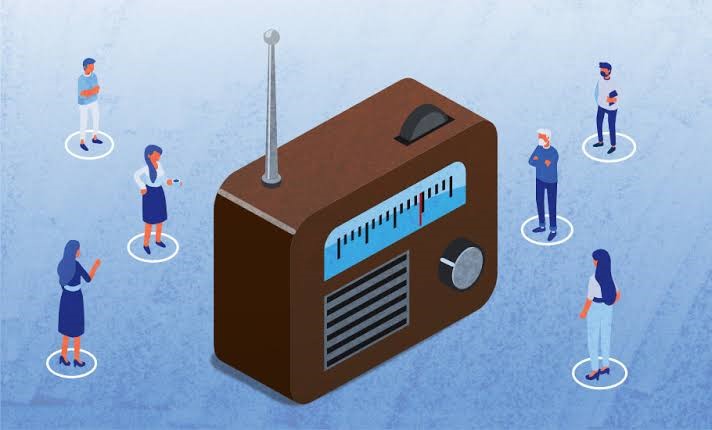Utilization of Community Radio for Disseminating Information on Environmental Change

Photo Credit : The Federal News
Environmental issues are a compelling topic of discussion due to the increasingly noticeable changes. Since the 1960s, environmental degradation has emerged as a significant social problem garnering attention at both local and global levels (Paudel et al., 2020). This indicates that environmental damage has become a critical issue, posing serious threats to both environmental and human sustainability. Broadly, environmental issues encompass various types, such as global warming, waste accumulation, land fires, pollution, and more. A key factor contributing to these problems is irresponsible human behavior. Many individuals still rely heavily on private vehicles, overuse electricity, dispose of waste improperly, and engage in other harmful practices. This behavior exacerbates the severity of environmental damage, which is now becoming more apparent. Hence, immediate and appropriate actions are essential to mitigate further environmental degradation.
Steps to address environmental damage can involve various stakeholders, including the media. The media serves as a bridge for communicating environmental issues. As a crucial tool for disseminating information or messages to the public, communication media comes in various forms, such as mass media, online media, electronic media, and more. Spreading information on environmental issues through these channels is a key component of environmental communication efforts. As a scientific discipline within development communication, environmental communication focuses on society as the group most impacted by environmental damage (Lie & Servaes, 2015). This approach aims to tackle environmental crises by educating, reminding, persuading, and helping solve environmental problems through the dissemination of information or messages via different communication channels. Environmental communication involves the deliberate exchange of messages that convey environmental knowledge and policy (Flor & Cangara, 2018).
One of the media that currently still shows its existence in the dissemination of development information is community radio. Community radio remains a viable option for information dissemination because it encourages responsible behavior at the local level, particularly in rural areas (Paudel et al., 2020). It is instrumental in broadcasting emergency information and significant events. While community radio serves as a medium for education, information, and entertainment, its primary function is to educate and inform, thereby enhancing the empowerment of local communities where it operates. Empowerment is often linked to the development process (Tripambudi, 2011). Unlike commercial radio, community radio serves as a platform for communities with a keen interest in social, political, economic, and cultural issues at the local level.
Backhaus et al., (2023) in their study said that community radio is considered an "ally" in communicating environmental problems. According to him, sharing this information can increase local knowledge in understanding environmental issues. Local knowledge is critical in sharing empowering, strengths-based stories about adaptation, mitigation and resilience in the face of increasingly severe climate change. Paudel et al., (2020) said the same thing that community radio is used to communicate environmental issues and support environmental protection action initiatives throughout the world. Local community radio has an influential role in disseminating information about environmental issues among the wider community.
Implementing the role of community radio in communicating environmental issues can be done by creating special programs. Paudel et al., (2020) in their study entitled "The coverage of environmental issues in FM radios in Nepal: the current status and challenges" stated that community radio discusses many environmental issues by creating special programs. Some of the environmental issues discussed in the program include climate change, disaster risk management, and forest and wildlife conservation. However, it needs to be emphasized that environmental programs run by community radio are still limited. Therefore, in the future community radio must continue to promote environmental issues through environmental programs.
The process of disseminating environmental information is now increasingly easy to reach a wide audience with the help of technology. Paudel et al., (2020) mentioned an interesting thing which in their study stated that many community radio stations had begun to utilize internet technology in the form of streaming to reach a wider audience. Efforts to appropriately persuade the audience are also made by broadcasting programs at prime time, conducting public opinion surveys. The results of environmental programs by radio are considered capable of having an impact on the formation of environmental care groups (eco-clubs), carrying out tree planting movements, and reducing open defecation. In other words, community radio still has the power of persuasion in instilling environmental issues into the audience's perspective.
However, running an environmental program is not as easy as imagined. This is because in this study, there are several challenges in maintaining the sustainability of environmental and community radio programs. First, the limited funding experienced by community radio. This happens, the management of community radio mostly comes from independent funds. The assistance received remains available but there is still uncertainty about the sustainability of this assistance. Second, there is a lack of environmental journalism that has insight and skills. Environmental journalism is really needed to help design interesting stories that can persuade audiences. Third, it is difficult to find experts who understand environmental topics and issues. Environmental experts are needed as a reference group that can really persuade the public so they want to get involved in environmental protection efforts.
-Rosmalia Ahmad & Diana Anggraeni
References
Backhaus, B., Foxwell-Norton, K., & Leitch, A. (2023). Listening for the local: Australian community radio and climate change communication. Media Internation Australia. DOI: 10.1177/1329878X231193182.
Flor, A. G., & Cangara, H. (2018). Komunikasi Lingkungan: Penanganan Kasus-Kasus Lingkungan melalui Strategi Komunikasi. Jakarta: Prenadamedia Group.
Lie, R., & Servaes, J. (2015). Disciplines in the fields of communication for development and social change. Commun. Theory. DOI:10.1111/comt.12065
Paudel, P. K., Bastola, R., & Lopchan, P. T. (2020). The coverage of environmental issues in FM radios in Nepal: the current status and challenges. Helliyon. Doi: https://doi.org/10.1016/j.heliyon.2020.e04354
Tripambudi S. 2011. Radio komunitas sebagai media alternatif untuk pemberdayaan masyarakat. J. Ilmu Komun. 9(3):323–343.

